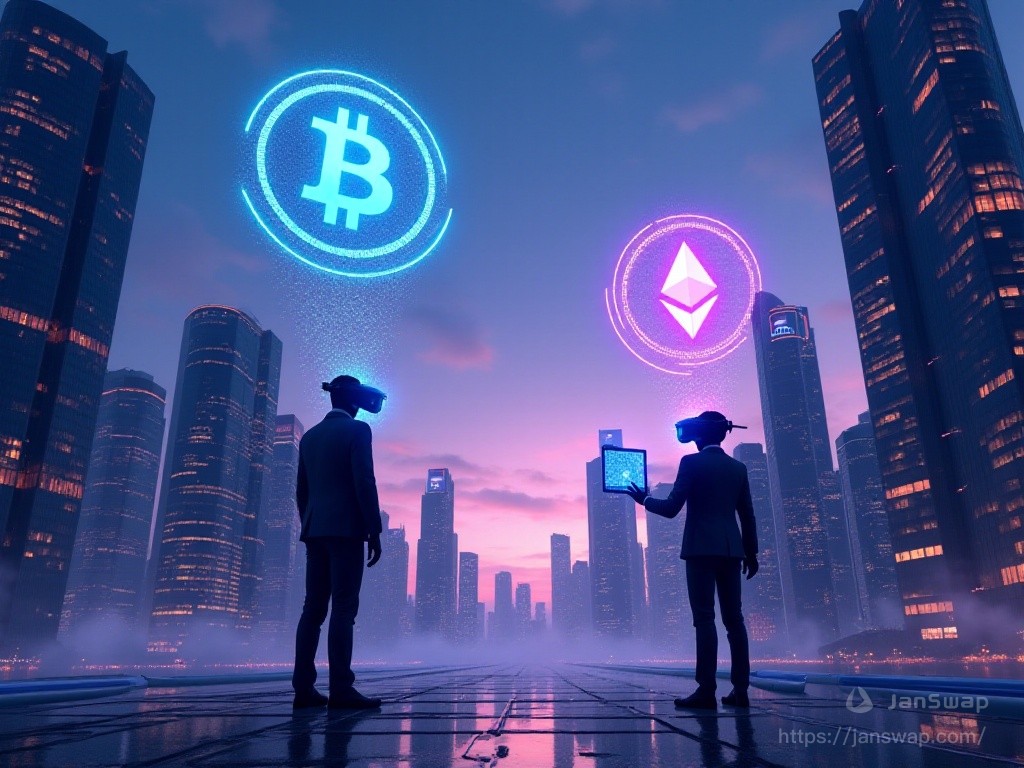

Story Begins
Hi everyone, I'm Little K. Back in 2021, like many of my friends, I started my mining journey. At that time, Bitcoin price broke through $60,000, and Ethereum also surged to over $4,000, making mining profits quite considerable.
As someone born after 1995, I had been following cryptocurrencies since college. While my classmates were worried about finding jobs, I had a bold idea: why not try mining? I took action immediately, gathering money from my part-time jobs and borrowing from family, totaling over a hundred thousand yuan, and invested it all in mining equipment.
I remember struggling to buy graphics cards. They were extremely scarce and expensive at the time. I often stayed up late at my computer, waiting for new stock on various e-commerce platforms. Sometimes when stock finally arrived, it would be sold out by the time I tried to place an order. After more than two months of running around, I finally got my hands on more than ten 3060 and 3070 graphics cards.
Assembling the mining rigs was also full of challenges. I watched countless tutorials online and humbly sought advice in various mining groups. The first mining rig took an entire day to assemble, encountering various issues: motherboard not recognizing graphics cards, system crashes due to incorrect overclocking parameters, thermal throttling due to poor cooling, etc. But when I saw the first mining rewards arrive in my account, that sense of achievement was indescribable.
During that period, mining completely dominated my life. The first thing every morning was checking the mining rigs' status and last night's earnings. I would remotely connect to check the rigs during lunch breaks. Before bed, I had to verify all parameters were normal. Though exhausting, seeing the stable daily income made me feel satisfied.
Historical Turning Point
September 15, 2022, is a date I'll never forget. Ethereum officially completed its transition to PoS mechanism, this historic moment known as "The Merge" completely changed the entire cryptocurrency ecosystem.
That early morning, like millions of miners globally, I sat at my computer witnessing this historic moment. As the last PoW block was mined, my mining rig displayed "Unable to connect to pool." That moment was truly painful.
Looking at the humming mining rigs in the room and thinking about the initial investment, my feelings were complicated. These graphics cards were each painstakingly acquired, each carrying my blood and sweat. Now they suddenly couldn't be used for mining anymore - it felt like having a carefully built project suddenly shut down.
But as a young person, I quickly adjusted my mindset. Since times have changed, we must move with them. I began seriously studying the PoS mechanism, trying to find new opportunities.
Path of Transformation
To be honest, I was resistant to change at first. After all, having invested so much money in mining rigs that suddenly became unusable - anyone would feel uncomfortable. But after carefully studying the PoS mechanism, I discovered this was actually a new opportunity.
I spent two full weeks deeply learning about PoS principles and operations. Through extensive reading of technical documents and whitepapers, participating in various community discussions, I gained a new understanding of PoS. This mechanism doesn't require massive electricity consumption to solve mathematical problems, but rather maintains network security through token staking, which is indeed more environmentally friendly and efficient.
The energy consumption data particularly shocked me. After Ethereum's transition to PoS, energy consumption decreased by 99.95%. Keep in mind that in the PoW era, Ethereum network's annual electricity usage was equivalent to that of a medium-sized country. As an environmentally conscious young person, this change made me genuinely pleased.
After gaining deep understanding, I decided to gradually liquidate my mining equipment while preparing to transition into a validator. The graphics card market had already started declining, but because I acted quickly, although I took some losses, the overall loss was within acceptable range.

Practical Experience
After more than six months of practice, I've accumulated considerable experience with PoS staking. First, becoming a validator does require significant capital investment - running a single validator node requires staking 32 ETH. For many regular investors, this threshold is indeed high.
However, the market always provides solutions. Through staking pools, small investors can also participate. I started staking through services like Lido. Although there are service fees, it lowered the entry barrier and eliminated the need to maintain nodes yourself - a good choice for beginners.
When I first started staking, I was even more nervous than when mining. I checked returns dozens of times daily, worried something might go wrong. Looking back, such anxiety was unnecessary because PoS returns are relatively stable, fluctuating between 4-6% annually. While not as high as mining returns in the past, it's stable and doesn't involve hardware depreciation or electricity costs.
I remember once nearly getting penalized due to validator client issues. That experience taught me that in PoS, technical knowledge and risk awareness are equally important. Later, I specifically learned some basic operations knowledge and gained a deeper understanding of Ethereum network operations.

Deep Thoughts
Recently, I've often pondered: why did cryptocurrency transition from PoW to PoS? This transformation reflects the development direction of the entire industry.
In traditional finance, people earn returns by holding stocks and bonds - a model proven viable through practice. In the cryptocurrency world, PoS mechanism allows token holders to maintain the network and earn returns through staking, a model that shares similarities with traditional finance.
This transformation indicates cryptocurrency is developing toward a more mainstream and sustainable direction. Like any new thing, cryptocurrency needs continuous evolution and improvement. From initial Bitcoin mining to current PoS staking, each step of evolution moves toward a better direction.
As someone who personally experienced this transformation, I feel honored. Although there were setbacks in the process, these experiences gave me a deeper understanding of the industry. I believe cryptocurrency will continue to develop and grow in our generation's hands.

Market Data
Let's look at some data: As of early 2024, Ethereum staking volume exceeded 25 million, approximately 20% of total supply. This number continues to grow, indicating more people are accepting and participating in the PoS mechanism.
Staking yield maintains around 5%, which while not particularly high, is reasonable considering the risk and operational difficulty. Most importantly, this return is relatively stable, unlike mining returns which fluctuated dramatically with hash power and coin prices.
Network security has also significantly improved. Under PoS mechanism, attacking the network requires staking large amounts of ETH, and malicious behavior results in stake penalties. This economic incentive mechanism makes the cost of attacks far exceed potential benefits, effectively protecting network security.
Block time has become more stable, an important improvement for the entire Ethereum ecosystem. Stable block time means more predictable transaction confirmation times, greatly helping user experience for decentralized applications.
Future Outlook
Looking ahead, I believe PoS mechanism will become mainstream in the cryptocurrency field. This isn't just because it's more environmentally friendly, but more importantly because it lowers participation barriers, allowing more ordinary people to participate.
I often imagine future scenarios: perhaps in a few years, staking cryptocurrency will be as simple as buying mutual funds today. Ordinary people can easily participate in staking through mobile apps and earn stable returns. This trend is already emerging, with various staking services and tools constantly appearing.
As someone who experienced the transition from PoW to PoS firsthand, I feel the process, though somewhat painful, was worthwhile. It gave me a more comprehensive understanding of the industry and taught me the importance of adapting to change.

Practical Advice
Based on my experience, I want to offer some advice for friends interested in PoS staking. First, always start small. You can choose well-known staking pools like Lido, Rocket Pool, etc., which have good security and liquidity.
When choosing staking services, pay special attention to: 1. Platform security and reputation 2. Staked token liquidity 3. Service fee levels 4. Transparency of return distribution 5. Timeliness of technical support
Also, manage your funds well. In cryptocurrency, never invest more than you can afford to lose. I suggest investing maximum 10-20% of total assets, so extreme situations won't affect normal life.
Additionally, continue learning and following industry developments. The cryptocurrency field develops rapidly, with new technologies and projects constantly emerging. Only by maintaining learning can you catch new opportunities. I spend time daily reading industry news and technical documents, participating in community discussions - all excellent learning channels.

Conclusion
Writing this reminds me of when I first assembled a mining rig - it feels like yesterday. Back then, I watched my first mining rig start up with immense excitement. Although I've now transitioned to being a validator, that enthusiasm for new technology has never changed.
Our generation is truly fortunate. We caught an amazing era, personally experienced the transition from PoW to PoS, and witnessed cryptocurrency technology innovation. These experiences give us confidence in the future and teach us that in this rapidly changing world, maintaining an open and progressive mindset is most important.
Though times change, the opportunities cryptocurrency brings us never change, they just present differently. As new generation participants, we should explore and innovate in our own way, contributing our part to this industry.
Finally, I want to say, whether you're a miner, validator, or regular token holder, we're all participants and witnesses to this great transformation. Let's look forward to cryptocurrency's bright future together!







 Français
Français Deutsch
Deutsch Русский
Русский Português
Português Español
Español Italiano
Italiano Türk
Türk
